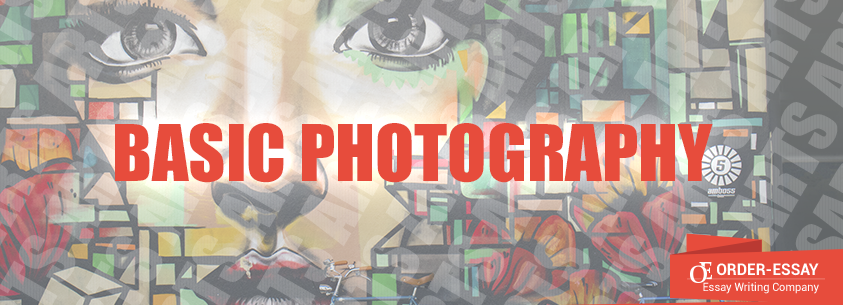
Eugène Atget is a talented French photographer, considered as one of the pioneers of street and urban photography. For some reason, his works have not been in demand during his lifetime, but later they were appreciated and inspired the next generation of photo enthusiasts. This paper is devoted to the legendary French photographer and his two works.
At the end of the 20thcentury, many have sought to ensure to work in the new art that embodied a kind of unification of traditional arts and rapidly developing science (Brion, n.d.). Atget was not an exception in this regard. However, he chose his own art path. Its main goal was to create a documentary photo of cityscapes and architecture. Thanks to his works, he was able to capture black-and-white images of rapidly changing Paris at the beginning of 20th century, and these poignant images are now highly appreciated by historians and photography lovers.
Atget was just wandering the streets of Paris with his bulky large camera and filming literally everything in sight: palaces, old buildings and mansions in the historic center, entrances of houses, courtyards and storefronts, bridges and quays of the Seine. In addition, photos of Eugene Atget were also a variety of urban scenes with representatives of the lower strata of society, particularly small traders, street hawkers and even girls of easy virtue. After a while, a man in shabby clothes, who throws himself on the camera when shooting black veil, became a landmark of the French capital. Ordinary Parisians called him “Daddy Atget” (Fabrikant).
Need custom written paper? We'll write an essay from scratch according to your instructions!
Plagiarism and AI Free
Price from only 10.99$/page
Call Now
Start Chat
Order Now
Atget developed his own style of street photography, which was subsequently adopted by many famous photographers. During shooting, he played the role of an outside observer, capturing parts of the city that were inconspicuous for everyone else. During his long career, a self-taught photographer has learned to skillfully operate a variety of means of expression.

Let us look at this photo. It was captured in 1912 and named “Maitre Albert Shop.” Atget did not like taking pictures of people and he preferred to capture different parts of the city and architecture without a human presence. At the same time, a purely documentary photography “Maitre Albert Shop” indicates a deep connection of Atget with visual image of everyday life of ordinary people and it is a part of collection of photos – pictures of stores, shop windows and trademarks. There is the modest facade with a sign written dark paint directly on the light wall, primitive architecture, and baskets of commodities. The composition is natural, and there are no staged shots. The picture was taken with the beautiful Dutch Renaissance conviction, immortalized and ennobles a small grocery store on the outskirts of Paris.
Atget had to constantly carry weighty huge photographic equipmentwith “Arte” tripod with him through the streets of Paris. Atget used an ordinary camera, which created the image on the thin glass plates with the size of 18×24 centimeters (“Berenice Abbott and Eugene Atget”). The lens of this camera did not have sufficient sharpness, which resulted in many of the works do not differ much in technical quality.

This is “Avenue des Gobelins” that was captured in 1927. For the first time, the picture was shown in the commercial exhibition in Paris, 1929. At a first glance, the story of thisphotoseems to be subject. But the reflection in the glass window confuses the viewer, because it almost completely hides the clothes of dummies and almost puts them on the street, literally, on the street reflection. The photo seems both glossy and transparent, the plot is both real and artificial, and the composition is open and restricted. There are mixed feelings of “liquid” and static, shimmering substance dissolving the boundaries between reality and fantasy.



The photo related to the field of hobbies of Eugene Atgetin surrealism, to which he addressed at the end of his life. There are mannequins at the photograph, and they are goblins, as if they are talking at the background of window reflection of the glass city. Atget very clearly described the cultural values of the Parisian way of life of the early 20thcentury, at first glance inconspicuous simple layman, because these values are transparent, like air.
It was needed to compress or stretch the “skins” in order to point the camera at the sharpness (Hambourg). To determine the correct exposure, Atget relied solely on his own created spreadsheets and experience. It was impossible to make mistakes in exposure, because for each re-frame, one had to use another photographic plate, and Atget simply could not afford to carry a large supply of photographs.
Get a Price Quote
Eugène Atget died on August 4, 1927. Only a few decades after his death, Atget received well-deserved honors and he was named one of the world’s most important photographers. Stunning black-and-white photos of Paris made by Atget, inspired many talented photographers of the 20thcentury. Berenice Abbott believed that “Atget will be remembered as a historian of the city. This romantic loved Paris and we can weave a great tapestry of French culture thanks to his work” (Harris). By the way, Berenice Abbott got Atget’s photo archives after his death and started publishing Atget’s works and writing abou soon the most famous museums in the world began to fight among themselves for the right to purchase his outstanding collection of photos of the Parisian masters. The memory of Eugene Atget is still alive, and his works did not lose their relevance. They continueto make the viewer to experience a variety of emotions, admire and sincerely surprised the talent of the author.








